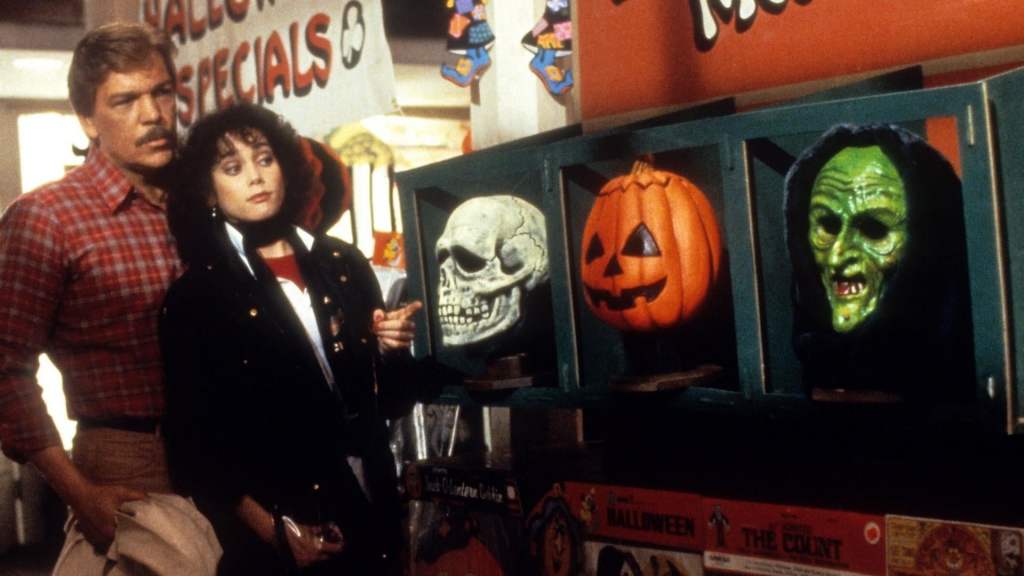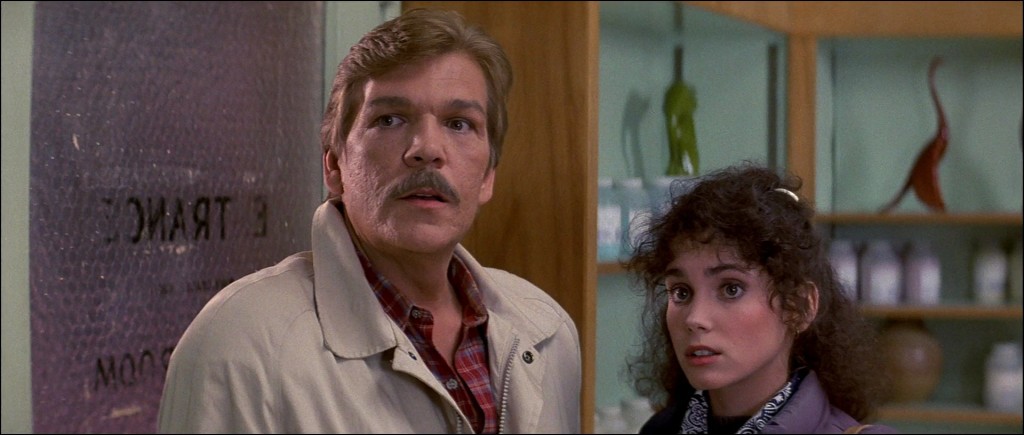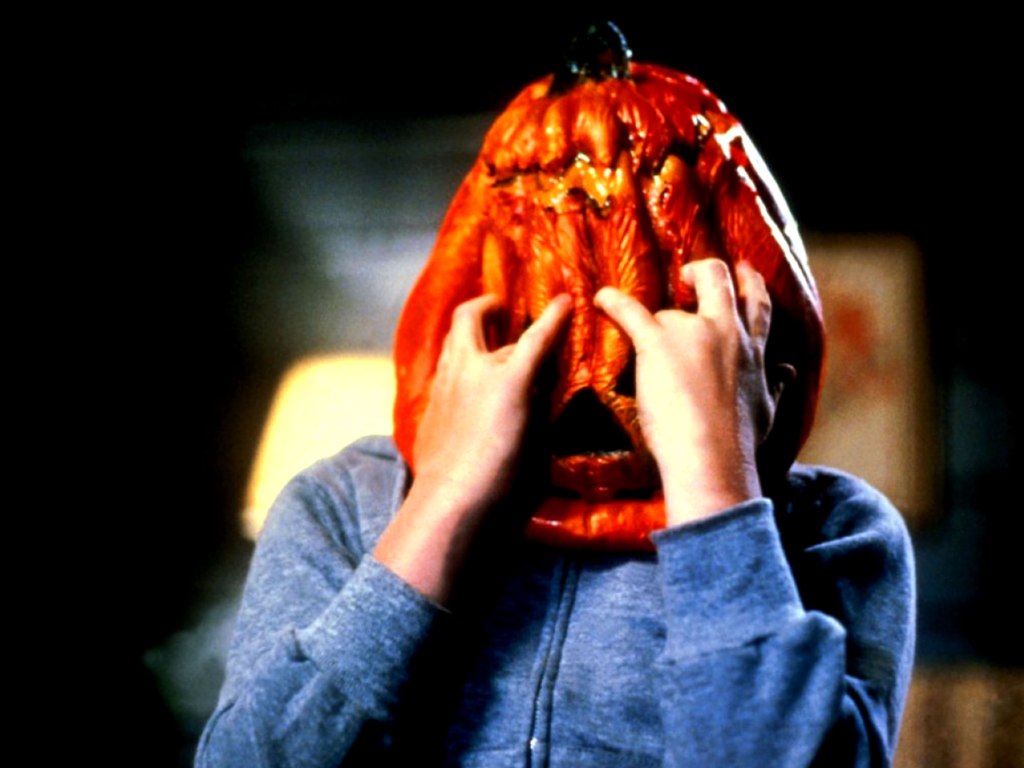1982 saw the release of one of the most reviled films of its time, the highly anticipated third entry in John Carpenter’s Halloween series. Halloween III: Season of the Witch had nothing to do with series’ villain, Michael Myers, and left audiences feeling betrayed and tricked. Is Halloween III really a bad movie, or could it have been a new beginning for a series that has since become one of tedium and mediocrity?

John Carpenter’s Halloween told of an escaped mental patient Michael Myers stalking a babysitter on Halloween night. Despite being rejected by every major studio, it grossed $47 million dollars against a $300,000 dollar budget — the most profitable independent film at the time. Seeing great potential, Universal Studios signed a deal with Carpenter and demanded a sequel. Set on the same night as the first, Halloween II isn’t as good as the first, but still far superior to most slashers of the time. It also did solid business, earning $25 million against a $2 million dollar budget.
In spite of Halloween II‘s success, screenwriter John Carpenter still had reservations with it. “We’re remaking the same movie, only not as good.” he would later lament. He decided Halloween II would bring the Myers saga to a definitive, satisfying end. It did, but Universal still wanted another movie. Where could the story go without Myers? Carpenter and his cohort Debra Hill had a clever idea: to base the series not on Myers, but Halloween itself. Every year could bring a new movie, with anything from ghosts to monsters to aliens, all somehow tied to the spirit of All Hallow’s Eve.

Halloween III was a collaboration between John Carpenter and screenwriter Nigel Kneale, known for the classic Quatermass science fiction films. It tells of a man named Dr. Challis on a quest to find out why a patient of his was murdered. He is joined by the victim’s daughter, Ellie Grimbridge, and together they travel to the town of Santa Mira. They discover that Conal Cochran, head of Silver Shamrock Novelties and a modern-day Pagan Druid, plans to murder millions of children on Halloween night in a mass sacrifice. His weapon of choice? His latest, popular run of masks.
“Witchcraft meets the computer age,” as director Tommy Lee Wallace puts it.
Halloween III has a lot going for it. For one, it’s the last film in the series that had the direct involvement of Carpenter. Carpenter produced the film along with Debra Hill, created the film’s moody score, and wrote the first draft of the script with Kneale. They reassembled their team from the first two movies, including cinematographer Dean Cundy, who recaptured the signature look of the first two. It also had a clear vision. While the original film was largely inspired by Psycho, Halloween III looked to another classic for its pallet.
Halloween III owes a lot to Invasion Of The Body Snatchers. For one, they’re both set in the fictional town of Santa Mira, often used in similarly themed works. The moment the heroes arrive, there’s the feeling of a town besieged. People peer out windows, duck around corners, and constantly watch the protagonists as they slowly unearth something sinister. Whenever that sinister something is threatened with exposure, those threatening it are killed by mysterious figures who seem to possess superhuman strength — fracturing skulls and ripping off heads with their bare hands.

Halloween III is not a slasher movie, but a Pod People movie, and in that regard it succeeds on every level. Challis and Grimbridge immediately seem overwhelmed by Santa Mira. We can’t help but shake the feeling that something horrible is closing in. The later part of the movie perfectly captures that Pod People feel. Dr. Challis is all alone with an entire town after him, running through empty buildings and down alleyways to escape, just like the end of any Body Snatchers story.
The movie owes a lot to Carpenter; it has the look, feel and sound of one of his works, even though he didn’t sit in the director’s chair. He made sure the chair was filled by someone with the right stuff, someone like Tommy Lee Wallace.
Tommy Lee Wallace is a frequent Carpenter collaborator, working on the original Halloween and even playing the killer in several scenes. Remember the scene in the closet? That’s him. He not only directed theatrical features, but also several episodes of the ’80s revival of The Twilight Zone, and the television adaptation of Stephen King’s It. Though he turned down directing Halloween II due to issues with the script, he enthusiastically accepted Halloween III after picking up on ties to Invasion of the Body Snatchers. After writing a final draft of the script, Wallace got to work. He directed the film with great care and skill, and it’s a shame he didn’t have a more lucrative career.
Wallace and Carpenter assembled some fine talent to bring their dark vision to life with a great lead and a frightening villain.

Tom Atkins plays Dr. Challis, the skirt-chasing MD turned unlikely hero. He’s most well known for other Carpenter films like The Fog and Escape From New York, but his credits also include Creepshow, Night of the Creeps, and mainstream hits like Lethal Weapon. Here, Atkins’s role very much mirrors Miles Bennell from Invasion of the Body Snatchers. A calm and collected individual in the beginning, Challis uncovers one dark revelation after another, each one driving him closer to a nervous breakdown.
The once smooth lady’s man is eventually reduced to a sweat-drenched lunatic, running down the street and desperately trying to warn the world. Take off the masks. They’ll kill us all.

The mad Conal Cochran is played by Dan O’Herlihy, a veteran actor with such classic credits including Fail Safe, Robocop, and Twin Peaks. Here, O’Herlihy not only delivers one of the best performances of his career, but also one of the most underrated villains in horror history. While Myers was sinister and silent, Cochran was a talker, but his talk was just as frightening and Michael’s walk. He could be incredibly charismatic, but also as dark and sinister as any horror villain should be.
His best moment is the chilling monologue where he explains his motivations to the captive Challis, and this brings us to one of Halloween III‘s biggest strengths. Halloween III actually has a really interesting theme about the dangers of mass consumerism. Some of you may think I’m stretching it, but just hear me out.
Consumerism has been a central theme in many classic horror films, most notably the 1978 Dawn Of The Dead. Cochran’s plan hinges on creating a product with mass appeal and marketing it to children, who, as we all know, are very susceptible to advertising. The Silver Shamrock campaign bombards the viewer from start to finish. The masks are everywhere — on TV, in store windows, and on the face of every child we see. Every kid wants one, every kid sings the jingle, and every kid waits for this mysterious big giveaway on Halloween night.

The theme of consumerism is explored several times in the film. Dr. Challis, for example, inadvertently almost saves the lives of his own children when he purchases them a pair of Halloween masks, only for them to reject his gift in favor of the Silver Shamrock masks. They sing the jingle of the commercial, convinced by the power of advertising that they need these masks to have fun, blissfully unaware of the danger they pose.
Sean Clark of Horrorhound Magazine jokes on one of the audio commentaries “It’s kind of cool that the kids who live are the kids who aren’t trendy and buy the same mask as everyone else.” This remark was intended as a joke, but it does highlight the intelligence of the film. Those that don’t fall victim to mass advertising are rewarded with their lives.

One could argue this makes Halloween III the smartest of the series. The first two films were stylish but simple, and it was in their simplicity that they were genius. Halloween III, on the other hand, is a movie with a purpose, giving the audience a little food for thought along with the usual thrills and chills. It’s not the best movie in the series — a title the original still holds without contest — but it’s one of the most well thought out of the bunch. The marvelous creativity from this entry promised many more such films in the future.
Sadly, the anthology series was never to be.

In spite of being a success at the box office, earning $14 million against a $2 million dollar budget, those numbers were a far cry from the earnings of the first two films. The backlash against Halloween III from critics and audiences alike was vicious, despite the advertising campaign clearly showing this was not intended as a direct sequel. Because of this, the studio wanted Myers back in the game.
Carpenter was hesitant to continue the Myers saga, but he tried. His initial draft of the next film wouldn’t be a slasher film, but a psychological thriller showing how the 1978 massacre affected the small town of Haddonfield. The studio, however, rejected this more cerebral take on the material and Carpenter threw in the towel. People demanded Michael Myers, and they paid a heavy price for him.

Likable characters were replaced with bland bags of blood, moody atmosphere was traded for imitation horror, and the once great villain was given a convoluted backstory involving an ancient cult. A low point came in Halloween: The Curse of Michael Myers, where the original cut saw Myers defeated by magic rune stones. The killer who once casually walked through a closed glass door was now completely de-mystified.
Many films can be blamed for the rapid decline of the series, but Halloween III is innocent. Not only that, it’s one of the best this series has to offer. It’s a smart, funny, and moody piece that has Carpenter’s stamp all over it. It has great Dean Cundy cinematography, spooky music, a likable lead, a frightening villain, and a nice bit of anti-commercialism satire.

After many years and many bad sequels, Halloween III is getting some well deserved reappraisal, but it’s still a bittersweet revelation. The ending of Halloween III finds Challis frantically screaming into a phone, begging the TV stations to stop the commercial that will trigger Cochran’s killer masks. Given the decline of the series after, this seems oddly poetic. It’s almost as if Challis is Carpenter himself, begging the studio to turn the series off before it was too late. All the ghosts, ghouls and monsters that could have been do sound pretty sweet when compared to a killer being defeated with magic rocks.
Like this article? Check out these similar pieces by some of our top contributors!

Halloween II was also a far cry from the box office success of the first film.
LikeLike